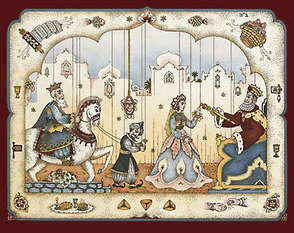Purim
The festival of Purim is celebrated every year on the 14th of the Hebrew month of Adar, preceded by the fast of Easter 13th of Adar, (late winter/early spring). It commemorates the salvation of the Jewish people in Ancient Persia from Haman’s plot “to destroy, kill and annihilate all the Jews, young and old, infants and women, in a single day.” Traditional food is hamantaschen.

The story in a nutshell:
The Persian empire of the 4th century BCE extended over 127 lands, and all the Jews were its subjects. When King Ahasuerus had his wife, Queen Vashti, executed for failing to follow his orders, he orchestrated a beauty pageant to find a new queen. A Jewish girl, Esther, found favour in his eyes and became the new queen—though she refused to divulge the identity of her nationality.
Meanwhile, the anti-Semitic Haman was appointed prime minister of the empire. Mordechai, the leader of the Jews (and Esther’s cousin) defied the king’s orders and refused to bow to Haman. Haman was incensed and convinced the king to issue a decree ordering the extermination of all the Jews on the 13th of Adar (The Fast of Easter)—a date chosen by a lottery Haman made.
Mordechai galvanized all the Jews, convincing them to repent, fast and pray. Meanwhile, Esther asked the king and Haman to join her for a feast. At the feast, Esther revealed to the king her Jewish identity. Haman was hanged, Mordechai was appointed prime minister in his stead, and a new decree was issued—granting the Jews the right to defend themselves against their enemies.
On the 13th of Adar the Jews mobilized and killed many of their enemies. On the 14th of Adar they rested and celebrated.
The book of Esther is the only book of the Bible that does not contain the name of God. In fact, it includes virtually no reference to God.
